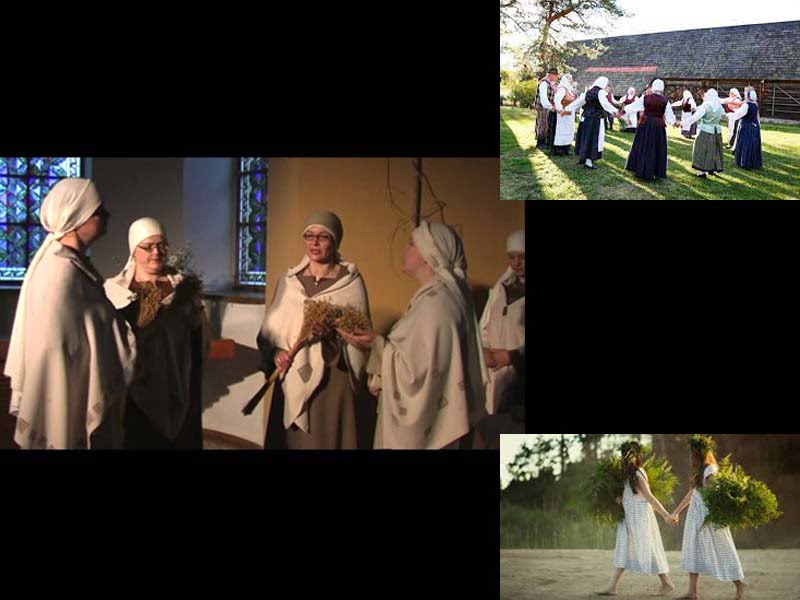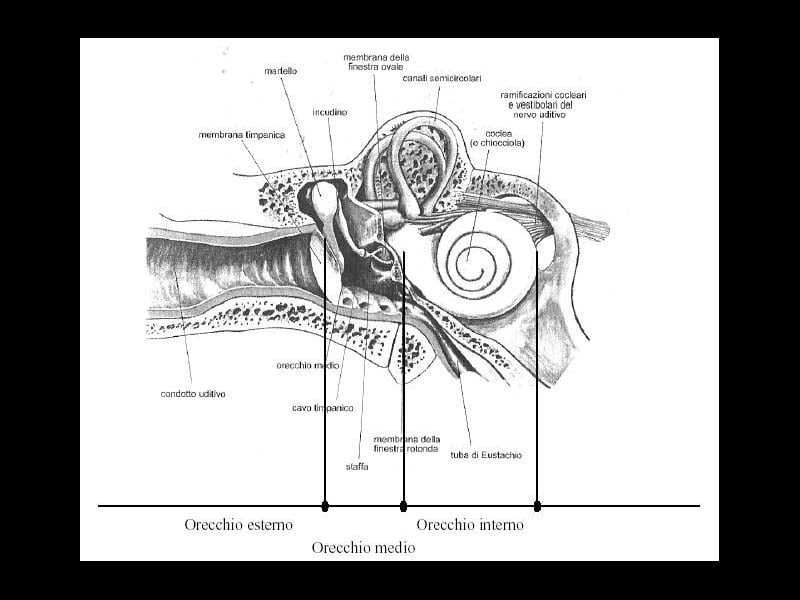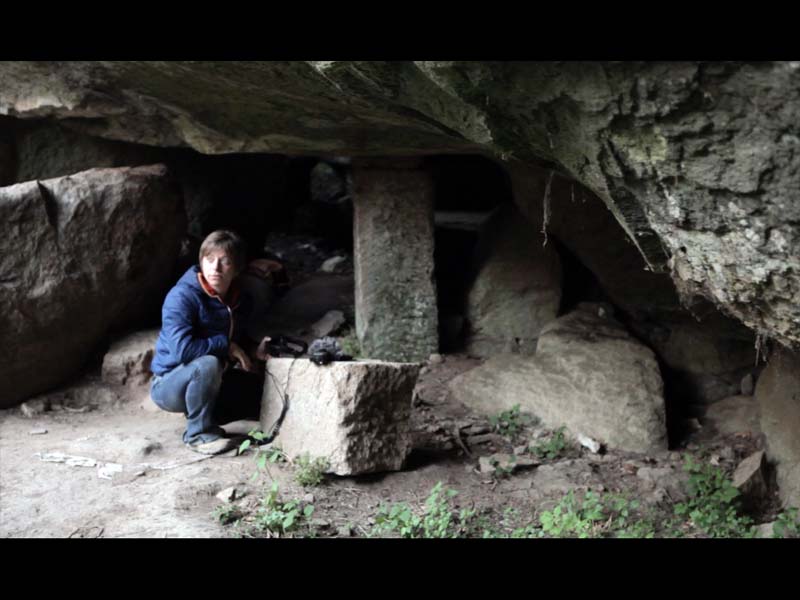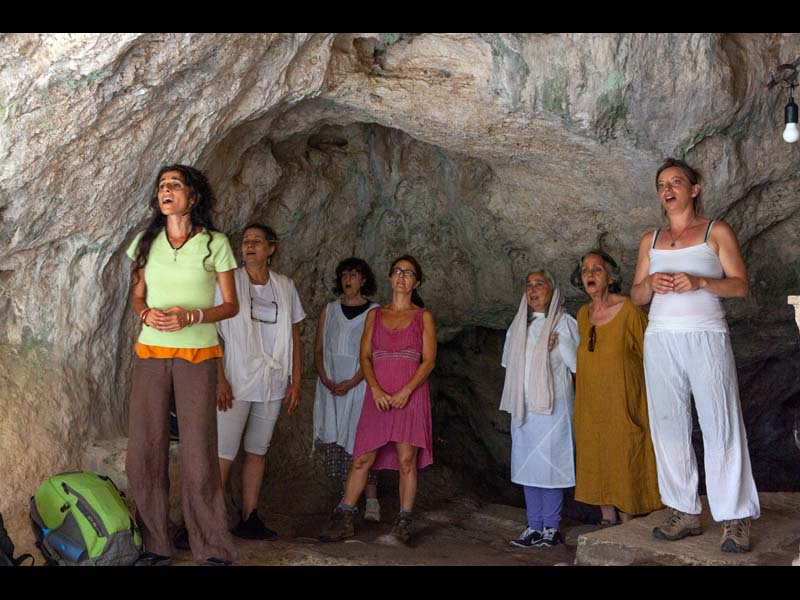di Donatella Livigni
What place does sound occupy in our lives as individuals and as a community and what space of meaning did it occupy for those who preceded us and, going back in time, for pre-Christian and prehistoric civilizations?
Marija Gimbutas identified a lot of information relating to these civilizations starting from the recovery of the repertoire of songs of the oral tradition of Lithuania, of which she herself was the owner.
These songs are, for her as for many researchers, the ever-living testimony of the practices and of the modus vivendi of local ancestors, the result, audible after centuries, of a deep bond with the earth, thanks to peaceful and harmonious living conditions, which gave time to devote oneself to the arts in general and to the art of sound in particular[1]. These are cultures in which a true and proper one has taken place and has been perpetuated over time mimesis between human being, sound and Nature.
Even today, the liturgical calendar linked to rituals offers communities the possibility of re-appropriating a sacred and protected space, characterized by a suspended time, different from the linear time of everyday life, in which to cultivate traditions and recover practices that are still partially intact. Proof of this is Holy Week, which sums up a large archaic symbolic vocabulary, Old and New Testamentary, relating to the peasant and pastoral world, of which the living traces are represented above all by the songs of oral tradition. In the case of more archaic rites, they are often entrusted to the memory and transmission of women, responsible for ensuring the vitality of the tradition and practices connected to it to strengthen the sense of belonging to an identity in the new generations and to renew in sound, in the word and in the choreutic-musical apparatus the feeling of the sacred[2].
Sound at the center of modern studies on archaic sites
Reconstruct hearing historyo
it would be a journey capable of making us privileged witnesses of the ages
and of the most diverse places (Ramòn Andrés)
Beyond music, there is an even more remote and original sense, a pre-musical sense that has its roots in the mists of time, an integral part of the organization of life in prehistoric civilizations: the sense of sound.
In the darkness of a deep cave, sound constituted (and always constitutes) the main sense of physical orientation, opening at the same time to a far more metaphysical level, "... the key to accessing the world of transcendence" [3]. Such and so great is the literature that bears witness to this ancestral link between the ear, place and the sacred, to lead Iégor Reznikoff, a French researcher, to demonstrate, on the basis of years of research in numerous prehistoric caves in the south of France, the coincidence between points endowed with particular resonance, echo and reverb effects and the greatest concentration, in those points, of rock paintings and graffiti.
Similarly, niches and cavities natural or carved into the stone are present where there is a specific acoustic effect of the place that you want to hyper-amplify, dampen or shape depending on the function, making the process of mimesis with the space even more effective. .
This practice has profoundly influenced the architecture of sacred spaces in general, as evidenced by the rock-hewn, Romanesque or Gothic Christian churches, built for liturgies which, for centuries, have expressed themselves through the sung voice, seeking the best effect even for that of the speaker.
There are numerous physical-functional explanations to confirm this observation. The receptivity of the ear knows no equal throughout the body, appearing like the sense of smell (another "sense of the dark" in man as in animals) from the first months of formation of the embryo. The memory of this cavernous environment (just think of its internal and external anatomical structure!) is present even before knowing the light of the Sun, carrying within it the traces of intrauterine life as well as the traces of the soul, spiritual and cosmic[4]. A "womb" located in the head therefore which, among other things, does not know gender, embodying, together with sound, a unifying sign of the feminine and the masculine.
The ear is a highly sensory organ capable of capturing not only the audible, but also the micro-variations in the state of the surrounding environment, bringing affective and subtly sensitive information right into the most remote parts of the brain, the brainstem , the limbic system and the brain reptilian. Based on its ancestral nature, we cannot but wonder how much of this "temple" is still a living trace within us, children of a contemporaneity that has reduced sensory orientation to sight.
The discipline of Archaeoacoustics investigates the relationship between specific sacred spaces and Man, both in physical terms and from an anthropological point of view, discovering how much the physics of sound and ritual behavior coincide. Starting from the measurement of the range of frequencies present in a site, the acoustic archaeologist can obtain other types of information relating to the geomorphological nature of the matter that composes it, determining how this, with or without human intervention, can influence who inhabits it.
Great strides have been made in recent years[5], thanks also to the possibility of measuring the electromagnetic field of certain places, as well as the frequencies that are generated there both "naked" (without the presence of physically audible sound) and through stimulation of the space with the use of voices or instruments. Shocking results have been produced, for example, by the high-resolution vibrational photographic measurement of the electromagnetic field of those who have immersed themselves, often in a state of meditation, in a place with particular structural characteristics[6]. Certain serious frequencies found within many archaic sites (103 to 120 Hz), are, in fact, particularly functional to deep meditative states, consequently also influencing the subtle qualitative disposition of the vital systems and of the nervous system in particular.
The acoustic analysis of certain sites also raises new questions about the wisdom that civilizations dating back to 8000-10.000 BC possessed in conceiving and building spaces, making them functional for the ritual experience for which they were conceived.
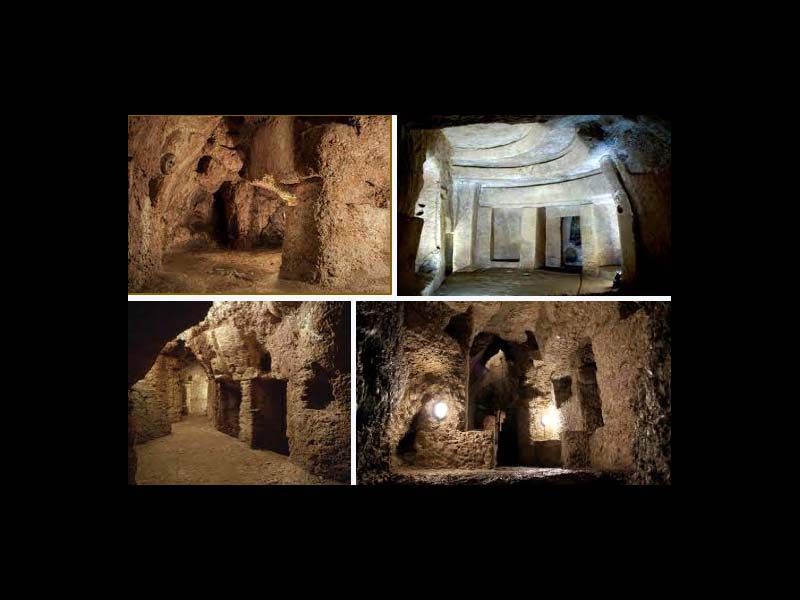
Entering a cave or a sacred place with cavities, ravines, different types of stone, niches, shapes and arrangements in space (megaliths) is therefore done with the ears as well as with the feet (which according to reflexology are each other's mirror). If we think about it, this awareness is innate to us. We do not enter a church with the same disposition with which we enter our own home: in a place endowed with sacredness the breath becomes wider and deeper, the step lightens, the voice becomes a whisper and, finally, reverent silence, leaving everyone free the senses to place oneself at the service of prayer. This already involves a transformation, not only spiritual but also physical. The acoustic aspect gives us back the Voice of the place even without having actual awareness of it, helping to bring to life the authentic and profound sensation of the sense of spirituality.
Outline of experiences in the field: the lively practice of sound
For years I have been practicing, as a vocal performer, trainer and researcher, the living experience of sound in specific sites, ending up translating the initial question of this article, how much the sense of sound is still a profoundly alive part of our way of being in the world , in an applied pedagogical practice in continuous transformation.
Starting from the assumption that the cults dedicated to the Goddess are an emanation of Herself and that the model of quality of life that emerges from civilizations matrifocals can be reiterated at any moment in history, I think that awakening the ability to listen to the senses is a virtuous and extremely effective way to go, because it is inherent in Man, a preferential channel of direct connection with Mother Nature.
By rigorously choosing paths linked to the sacred (proto-Christian and Christian rock churches that arise on the remains of older temples, hypogea and caves), I identify universal themes that the genius loci suggests and that guide the person deep into the acoustic experience of the sacred and the environment. Drawing on the functional disciplines of sound, anthropology and performative and medico-holistic practices, I propose sensorial-perceptive experiences coherent with the place[7].
The aim is to renew not only the ancestral bond with the Mother, but also to re-member (remember with the body and its functions) and reawaken the internal resources that the vocality and its complex functional systems activate. The ear and its extraordinary functions, as well as all the sense organs of which we are made up, know how to ferry us into a humus as old as Man and Nature, giving us the possibility to experience the space from within; to understand how the bystanders were disposed during the rites; to receive the resonance of their voices in the present, realizing what the physical and spiritual effects could be as a result. This work of sensory mimesis often leads to significant transformations in the quality of the vocal sound, by observing which everyone can find traces of themselves and their connection with Creation and, at the same time, psycho-physical and functional benefits.
Like me, there are numerous female researchers who have been able to combine the performative experience with the pedagogical one of the voice-body according to the site specific, using sound and oral tradition repertoires as tools to resonate with places. Each of them has found a more or less explicit pedagogical approach to Nature and the sacred, going in search of those vocal repertoires that show traces of archaism linked above all to female voices: among the many Anna Maria Civico on female vocal repertoires and sounds of Calabria, or Valeria Cimò, expert performer of frame drums in the south-western area of Sicily; Imke McMurtrie with the Georgian chants that recall the feminine used for healing; Ewa Benesz in the research of the original practices inspired by the ancient Sanskrit texts of the Vedas; Maria Silvia Roveri with the recovery of functional sound in Gregorian chant or Layne Redmond on the practices related to the shamanic drum[8]. Just to name a few. Each of them has found a modus operandi performative and pedagogical born from immersion in concrete practices based on the study of sound and the creative ability to reinvent tradition in the present with respect and rigor.
To summarize, sound is therefore still today the audible thread of universal space-time, the circular and quantum one, never linear, a temple of ancient memory functionally alive within us and, therefore, always ready to re-emerge and awaken the sense of profound presence and belonging to Mother Earth.
Donatella Livigni - 2022
Footnotes
[1] According to the studies of the philologist and folklorist Zenonas Slaviūnas, the Lithuanian polyphonic songs called Sutartinės refer to a term derived from "sutarti" or "susitarti", which means "to be in agreement" with something, but also in accord, in peace, in harmony with someone.
[2] Diego Carpitella – Conversations about music – Ponte delle Grazie 1993.
[3] Ramón Andres – The world in your ear – Adelphi 2008.
[4] According to Plotinus, hearing is having a clear perception of oneself and he adds that in a sound we can find what we really are. Kierkegaard states that hearing is “the most spiritually defined sense”.
[5] See the studies of Prof. Paolo Debertolis on the Archaeoacoustics of archaic civilizations.
[6] See Debertolis' studies at Göbekli Tepe, Cividale del Friuli, Alatri.
[7] I refer the results of this research to a future article which I hope will contribute in the slightest part to enriching the wealth of knowledge relating to the relationship between sacred spaces and people.
[8] Anna Maria Civico Contribution to performance theories – Rubbettino editions; Maria Silvia Roveri The vocal tract – vol.I – TYPES of editions; Layne Redmond – When the women played the drums – The Wise Owls – Venexia 2021.


